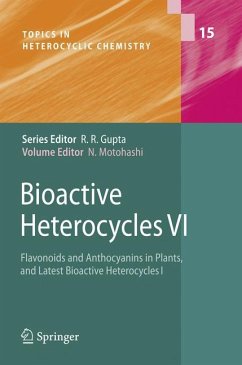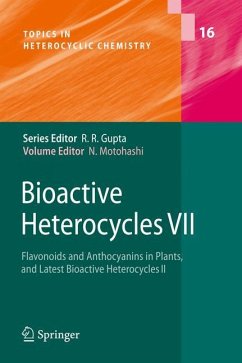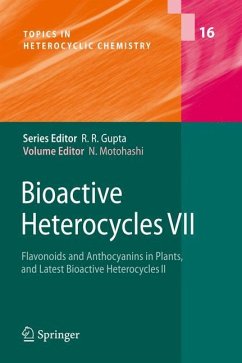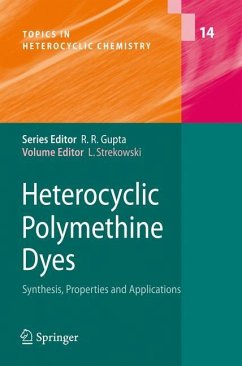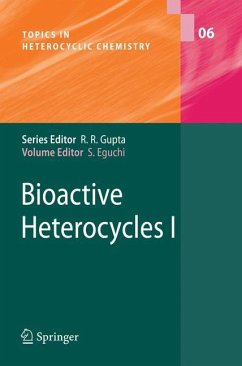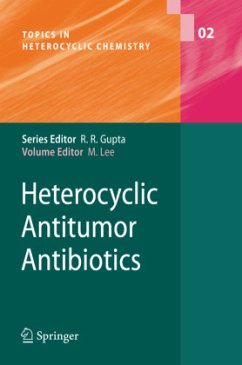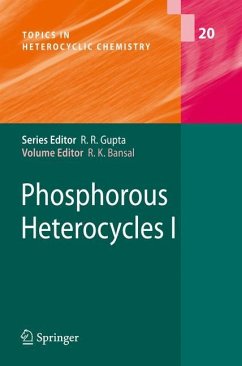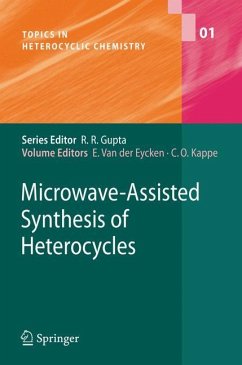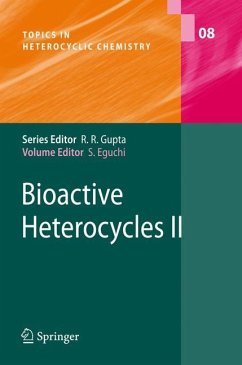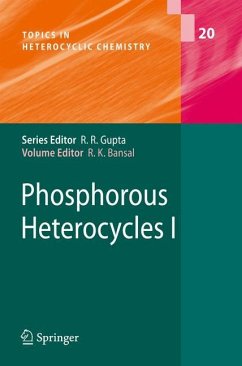
Bioactive Heterocycles VI
Flavonoids and Anthocyanins in Plants, and Latest Bioactive Heterocycles I
Herausgegeben: Motohashi, Noboru
Versandkostenfrei!
Versandfertig in 6-10 Tagen
226,99 €
inkl. MwSt.

PAYBACK Punkte
113 °P sammeln!
As part of the series Topics in Heterocyclic Chemistry,thisvolumetitledBio- tiveHeterocyclesII presentscomprehensiveandup-to-datereviewsonselected topicsconcerning?avonoidsandanthocyaninsinplants,andheterocyclessuch as bioactive phenothiazines, phenoxazines, and related compounds. The v- ume isseparated into two sections mainly concentrating onthese two topics. There are abundant and diverse ?avonoids with carbohydrates and lipids, alkaloids (betalain alkaloids and other alkaloids), phenols (chromones, c- marins,lignans,quinines,andotherphenolics),terpenoids(monoterpenoids, sesquiterpene lacto...
As part of the series Topics in Heterocyclic Chemistry,thisvolumetitledBio- tiveHeterocyclesII presentscomprehensiveandup-to-datereviewsonselected topicsconcerning?avonoidsandanthocyaninsinplants,andheterocyclessuch as bioactive phenothiazines, phenoxazines, and related compounds. The v- ume isseparated into two sections mainly concentrating onthese two topics. There are abundant and diverse ?avonoids with carbohydrates and lipids, alkaloids (betalain alkaloids and other alkaloids), phenols (chromones, c- marins,lignans,quinines,andotherphenolics),terpenoids(monoterpenoids, sesquiterpene lactones, triperpenoid saponins, carotenoids, and other t- penoids), and minerals as micronutritionalphytochemicals in fruits and v- etables of our daily diets. Among these phytochemicals, the ?avonoids have speci?c functionality in relation to age-related diseases such as hypertension, diabetes,cardiacinfarction,cataracts,andcancer.Theauthorsofeachchapter inthe?rst sectionhave presented their evidence in relationtothemechanism ofthepreventative andtherapeutic ability ofthecompounds. The ?rst chapter, Functionality of Anthocyanins as Alternative Medicine byNoboruMotohashiandHiroshiSakagami,presentstheirantioxidantme- anism for anthocyanidins, which are present in common foods. It is possible that anthocyanins may have been used both preventatively and clinically as part of many folklore medicines worldwide and may have provided heal- carebene?tssincetheappearanceofmankindsome7.5millionyearsago.The review willinform the reader as to their functionalityand mechanism. The second chapter, Bioactive Mechanism of Interaction between Ant- cyanins and Macromolecules Like DNA and Proteins by Seetharamappa J- dappagari, Noboru Motohashi, Mamatha P.Gangeenahalli, and James H. N- smith, presents the biological activities of anthocyanins, and the interactions of anthocyanins with DNA and protein. Anthocyanins might protect against damage to health by some types of harmful oxidants through various me- anisms such as their antioxidative activity, protein active site binding, and chelating complex formation. The review presents the interesting interactive mechanism of anthocyanin DNA complex formation.



